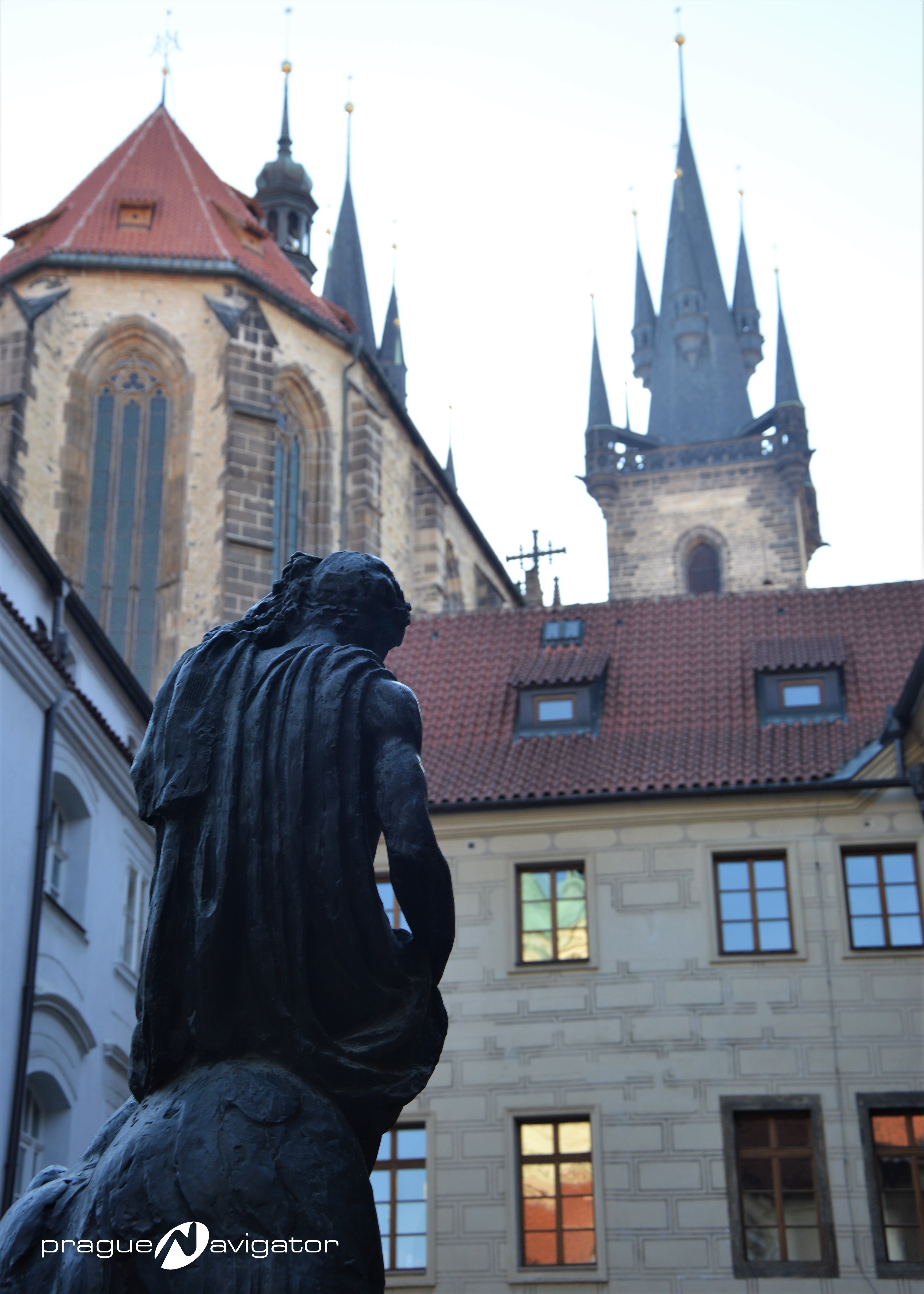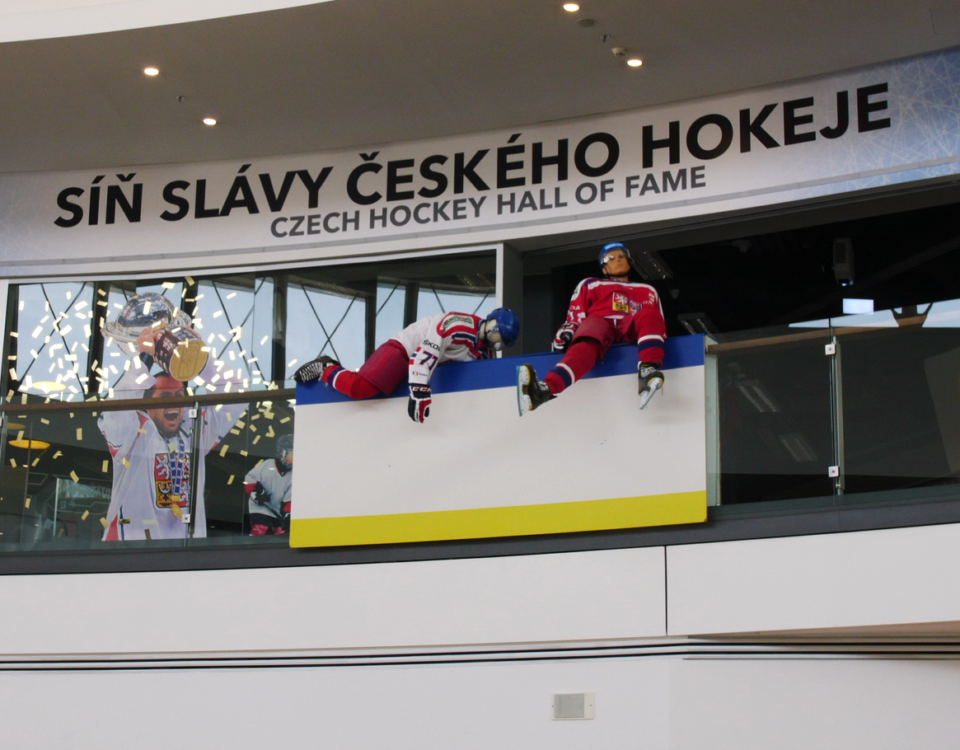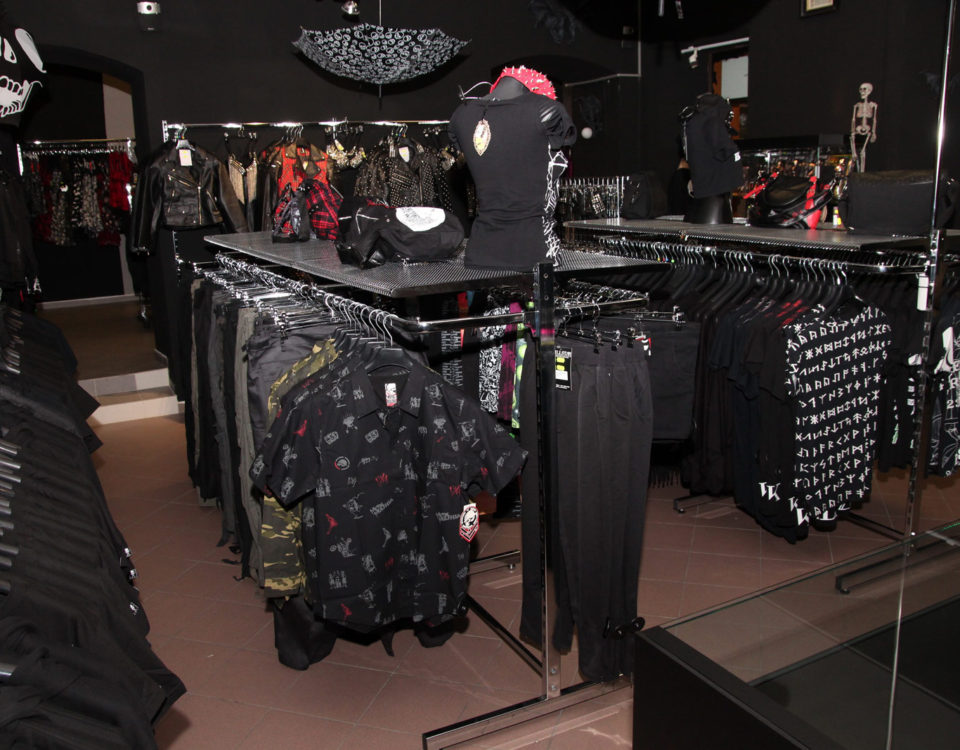- Your Online Prague Guide by locals – Follow us:
UNGELT

Autumn Prague Castle
October 16, 2018
Alternative Shopping in Prague – overview
November 16, 2018UNGELT
Týn Yard (Týnský dvůr) – Ungelt Prague
One of the most important historical sites in Prague, this block of buildings, probably built in the 11th century, was originally a fortified merchants’ yard, where customs duties – ungelt – were collected. The most important building here is the Granovský Palace with its arcaded loggia, one of Prague’s best preserved Renaissance treasures with beautiful sgraffito, and murals that depict scenes from the Bible and from Greek mythology.
The oldest name of the area between the churches of St. James (Jakub) and Virgin Mary before Týn is Týn or Týn Yard. The word týn means an enclosure, a fenced area, the former word otýniti used to mean to enclose. It originated from the Celtic word dunum – a hillfort, a fenced area, a fence; from Germanic tuna, German Zaun, English town. It was a fenced merchant yard, which according to archaeological research from the 1980s-90s originated in the 12thcentury. Older literature names the 10th century, when the place was supposedly inhabited by Ibrahim ibn Jakob, the author of the first report about the town. Back then, the merchant yard used to be a real stronghold, separated from the rest of the town by a moat and a wall. Its purpose was to protect the merchants and their merchandise, there were warehouses for the merchandise, horse stables, accommodation for the merchants, one of the oldest hospitals in Prague, as well as a small church of Virgin Mary in place above which today’s Týn Temple is rising. There were thousands of merchant carriages from Germany, Poland, Russia, Hungary, Venetia, the Netherlands, France, Greece, Armenia, Turkey and Arabia, bringing enormous amounts of goods, stated in the merchant yard’s registers: metals and minerals (gold, silver, copper, lead, tin, amber, nitre, salt, sulphur), tools, yarn and linen, wool and silk fabrics, furs, glassware, rugs, live stock, butter, suet, fish oil, oil, colours, waxes, paper, books, feathers, wool, sugar, and more; especially the kitchen utensils and delicacies, southern fruits, beverages were abundant. Huge amounts of fish were surprising, both stream fish and dried and smoked sea fish. Everyone who passed the merchant yard’s threshold enjoyed the king’s full protection, for which it was necessary to pay a fee. Protection fee gradually developed into compulsory toll for goods imported to Prague or passing through Prague, and later also for any goods imported anywhere in Bohemia. As early as in the 14th century, the toll used to be named by an old Germanic word ungelt, which eventually gave the name to the entire merchant yard. There was a house in which the merchandise was weighed and measured and the toll was calculated. Upon entry, everyone had to hand in their weapons at the gate to the ungelt manager, who also decided on eventual disputes. The evenings used to be merry here, as the merchants drank on their businesses and told stories from lands far away. Therefore also the name Merry Yard (Laeta curia) is known. Ungelt experienced greatest prosperity in the time of Charles IV and Václav IV. The merchants were very happy here, many of them settled here for good. The Prague customs privilege lost its meaning for the Czechs at the time of the Hussite wars, and even later on, Prague failed to reach its business significance, only to lose it completely in the mid-16th century. The toll house at Ungelt then only served to the Prague trade, and it was first transferred to Haštalská street in 1774, and later to the toll house opposite the Powder Gate in 1810. In the beginning of the 20thcentury, poor people of the town began to move in to Ungelt, and after World War II, there was a mix of warehouses, workshops, offices and flats of the lowest category here. In 1978, identification archaeological research started here, the yard’s actual reconstruction began in 1981. After the reconstruction, Ungelt was opened for public on the 18thDecember 1996.
Today’s Ungelt is made up of 18 houses, 12 of which adjoin the actual merchant yard, the other being on the perimeter, in place of the original Gothic enclosure wall. The houses bear marks of the architectural styles of all times, each house is different, yet altogether, they make a harmonious whole. Most houses have Baroque facades from the era after 1689, when Ungelt burnt down largely. However, the origin of many houses dates back to the beginning of the 15thcentury. The entrance from the Old Town Square leads from the Týnská Street through a gate in the Granovský Palace (No. 639), which is one of the best preserved Renaissance jewels of the town. King Ferdinand I gave this house to the customs officer Jakub Granovský of Granov in 1558 for faithful services. The new owner rebuilt the house in the mid-16th century in Renaissance style, and had it decorated with beautiful sgraffitoes and wall paintings. It is a two-storied building with arcade loggia on the side facing the yard. The sgraffitoes above the portal in the Týnská Street represent probably Ferdinand I on the left and Jakub Granovský on the right. On the loggia, there are paintings representing Biblical scenes and scenes from Greek mythology, namely the Judgement of Paris. House No. 640, named Petráčkovský, was originally a part of the Granovský Palace, and it also used to be the location of one of the oldest Prague coaching inns named Old Ungelt. The facade facing the Týnská Street is decorated with sgraffitoes. In the pavement in front of the house, there is a mark indicating the location of the original Church of Virgin Mary. The first references to house No. 642, At the Black Bear, date back to 1428. Its Baroque facade is decorated with statues of St. John of Nepomuk, St. Václav and Florian from the first half of the 18th century. The house was named after the statue of a black bear in chains, settled on the building’s corner. The eastern gate of Ungelt bearing an initial L(probably for king Leopold I, during whose reign a part of the yard was reconstructed) leads to Malá Štupartská Street, and is located in house No. 636 named Vrbnovský House (also U Štupartů). The house was famous around 1835 thanks to the U Komárků Café, where prominent Czech awakeners used to meet, namely Josef Kajetán Tyl, František Palacký, Pavel Josef Šafařík, František Ladislav Rieger, and others. The facade of the house No. 634 named At the God’s Eye (or At the Three Pictures) is decorated with paintings of Charles IV. St. Václav and Jiří of Poděbrady. The house No. 630 named At the Golden Ring today hosts an exposition of the Gallery of the Capital City of Prague with the theme of the 20th century arts. In the mighty house No. 646 named U Šviků z Lukonos, with Gothic gables and Romanic premises, there is the Ungelt Hotel today. In the Southern part of the yard, there is a restored original well; in the Northern part, there is a copy of Štursa’s sculptural group Day and Night. The terrain of the Romanic yard used to be more than two metres below today’s level.
source: https://www.prague.eu/en/object/places/1260/tyn-yard-tynsky-dvur-ungelt

The oldest name of the area between the churches of St. James (Jakub) and Virgin Mary before Týn is Týn or Týn Yard. The word týn means an enclosure, a fenced area, the former word otýniti used to mean to enclose. It originated from the Celtic word dunum - a hillfort, a fenced area, a fence; from Germanic tuna, German Zaun, English town. It was a fenced merchant yard, which according to archaeological research from the 1980s-90s originated in the 12thcentury. Older literature names the 10th century, when the place was supposedly inhabited by Ibrahim ibn Jakob, the author of the first report about the town. Back then, the merchant yard used to be a real stronghold, separated from the rest of the town by a moat and a wall. Its purpose was to protect the merchants and their merchandise, there were warehouses for the merchandise, horse stables, accommodation for the merchants, one of the oldest hospitals in Prague, as well as a small church of Virgin Mary in place above which today’s Týn Temple is rising.



